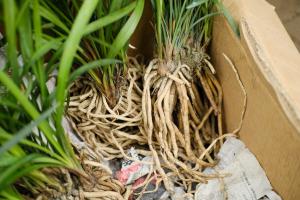When to Plant Oak Trees in Arkansas
Arkansas is known for its diverse landscape, including rolling hills, forests, and abundant waterways. Many landowners in Arkansas are interested in planting oak trees for their beauty and benefits, such as providing shade, improving air quality, and attracting wildlife. However, knowing when to plant oak trees can be crucial for their success. This article will explore the best times and conditions for planting oak trees in Arkansas.
Choosing the Right Time to Plant Oak Trees in Arkansas
The best time to plant oak trees in Arkansas is in the fall, specifically between October and early December. During this time, the soil is still warm enough for roots to grow, but the cooler temperatures and increased rainfall help trees establish a strong root system before the hot summer months. Spring is also an acceptable time to plant oak trees, but it often brings dry, hot weather that can stress young trees. Summer planting is not recommended because it can be too hot and dry for the tree to establish roots successfully.
Factors to Consider When Planting Oak Trees in Arkansas
Once you have determined the optimal time to plant oak trees in Arkansas, there are several factors to consider. First, it is important to select a species of oak that is well-suited to the local climate and soil conditions. For example, the southern red oak, post oak, and white oak are common species in Arkansas and do well in the state's varied soil types.
It is also important to choose a planting location that receives adequate sunlight and has well-draining soil. Consider the mature size of the oak tree and whether it will eventually cause issues with nearby structures or other trees. Additionally, avoid planting oaks near power lines, sidewalks, or other areas where their roots may cause damage.
Planting Techniques for Oak Trees in Arkansas
When planting oak trees in Arkansas, there are several techniques that can help ensure success. First, dig a hole twice as wide and just as deep as the tree's root ball. Remove any debris, rocks, or grass from the hole to ensure the tree has room to expand its roots. Next, carefully remove the tree from its container or wrapping and gently spread out the roots. Place the tree in the hole and backfill with soil, firmly tamping the soil around the tree as you go.
It is also important to water the tree immediately after planting to help settle the soil around the roots. Keep the soil moist but not waterlogged for the first few weeks after planting, and make sure to mulch around the tree to retain moisture and suppress weeds.
Caring for Oak Trees in Arkansas
After planting oak trees in Arkansas, it is important to care for them properly to ensure their success. Make sure to water the tree regularly during dry spells, especially during the first year after planting. Avoid using fertilizer during the first year, as this can damage the young roots. Once the tree is established, you can consider fertilizing with a slow-release fertilizer or organic compost.
Additionally, it is important to prune oak trees regularly to maintain their shape and health. Dead or diseased branches should be removed promptly to prevent the spread of infection, and any branches that rub against each other should also be pruned. It is best to prune oak trees during the dormant season between November and February.
In Conclusion
Planting oak trees in Arkansas can be a great way to add natural beauty and benefits to your property. By choosing the right time to plant, selecting a suitable species, and caring for the tree properly, you can help ensure its success for years to come. Remember to consider the local climate and soil conditions, planting techniques, and ongoing care when embarking on your oak tree planting project.

 how many times do yo...
how many times do yo... how many planted tre...
how many planted tre... how many pine trees ...
how many pine trees ... how many pecan trees...
how many pecan trees... how many plants comp...
how many plants comp... how many plants can ...
how many plants can ... how many plants and ...
how many plants and ... how many pepper plan...
how many pepper plan...































